Beyond painting and gardening, I am good for nothing — Claude Monet
The first time I saw Claude Monet’s Water Lilies at Le Musée de l’Orangerie I cried. As I stepped into those oval rooms, I was struck by the profound feeling that someone made this; I was struck by the immeasurable ways that art can move. On a series of eight, almost seamless panels displayed in two adjoining rooms, the viewer is immersed into an infinite landscape, an endless panorama of water and water lilies; low-hanging willow branches; reflections of clouds and trees; and the continuous shifting of light and shadow as day passes to night, night passes to day. Seen from a distance, the landscape almost appears to have no definition, but the longer you stare at it, the more objects start to take shape and gain dimension.
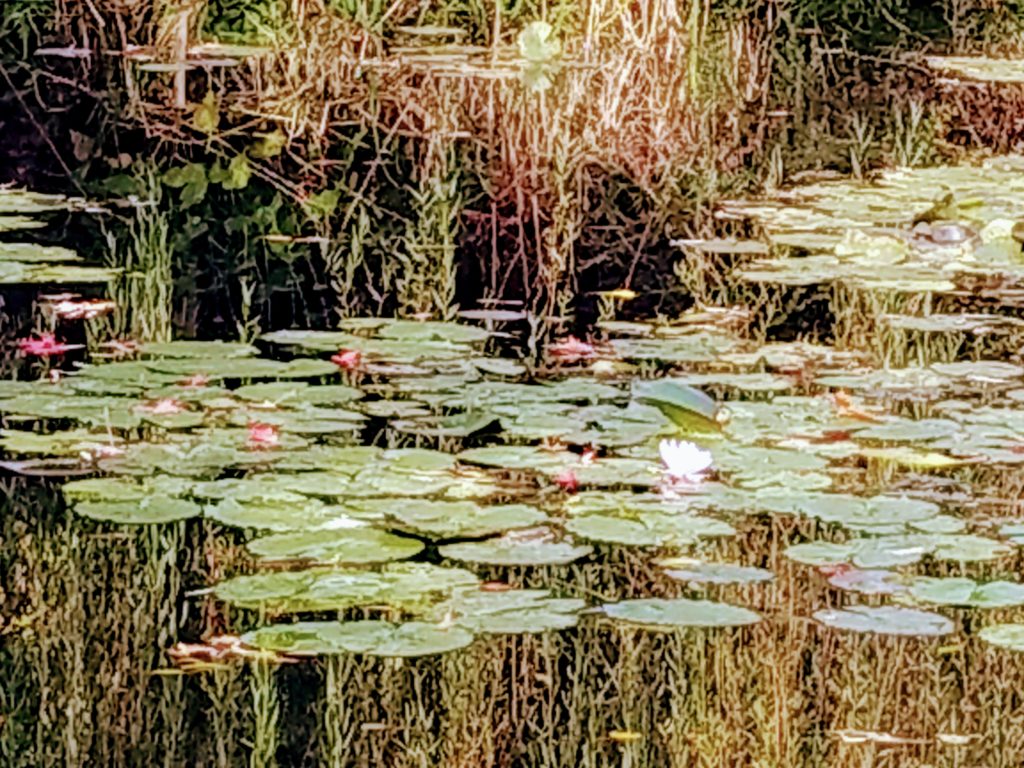
Monet’s primary focus as an artist the last three decades of his life were his water lilies, as he experienced them from his extensive gardens at Giverny. They aren’t just one set of paintings but rather hundreds of different paintings that you can now find in museums around the world. Monet, who in 1914 was suffering from vision loss, grief after the loss of his son, and the horrors of World War I, was encouraged and supported by his friend Georges Clemenceau to undertake the project, and the artist offered those displayed in l’Orangerie to the State of France on the day after the Armistice of November 11, 1918, as a symbol of peace. The massive paintings were installed according to Monet’s exact wishes after the painter’s death. While they received little public recognition immediately after Monet’s death — Impressionism being pushed aside for the avant-garde scene — after World War II, interest in the painter’s work took off again, and the paintings are now considered masterpieces.
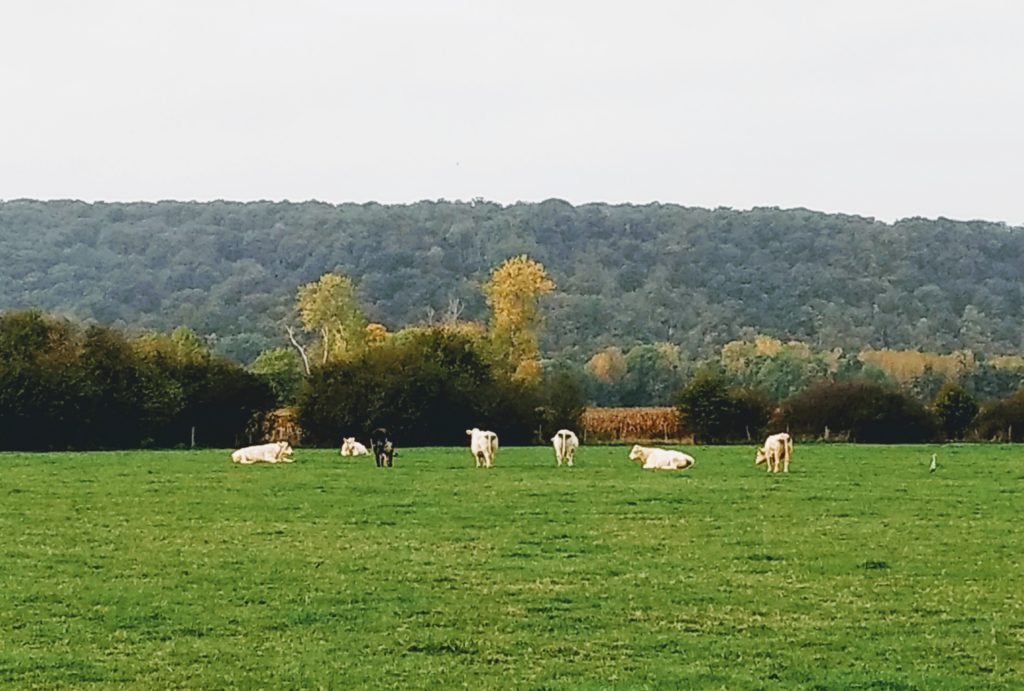
While I’ve long been a fan of Monet’s work, I’ve never before taken a visit to Giverny to see first hand the landscape that inspired so much of his work. When my mom (also a lover of Impressionism) decided to come to Paris to see me, we immediately knew we needed a little holiday in the tranquil country with Monsieur Claude.
Giverny is a small town, just across the Seine from the much-larger (though still small) Vernon. We stay in a B & B just outside the town, and enjoy a lovely French countryside walk into town (and hitch a ride back with a friendly local back at night; I forgot how quickly it gets dark in the country). In town, after some flâneusing around, we visit the cemetery where Claude Monet is buried and linger over lunch at Baudy, a historic site that was once a central location where artists — Cézanne, Renoir, Rodin and Monsieur Claude Monet himself as well as numerous American painters — could stay, hang out, and talk. Sitting out front in the relaxing calm is pleasurable enough, but the backyard gardens alone are worth a visit.
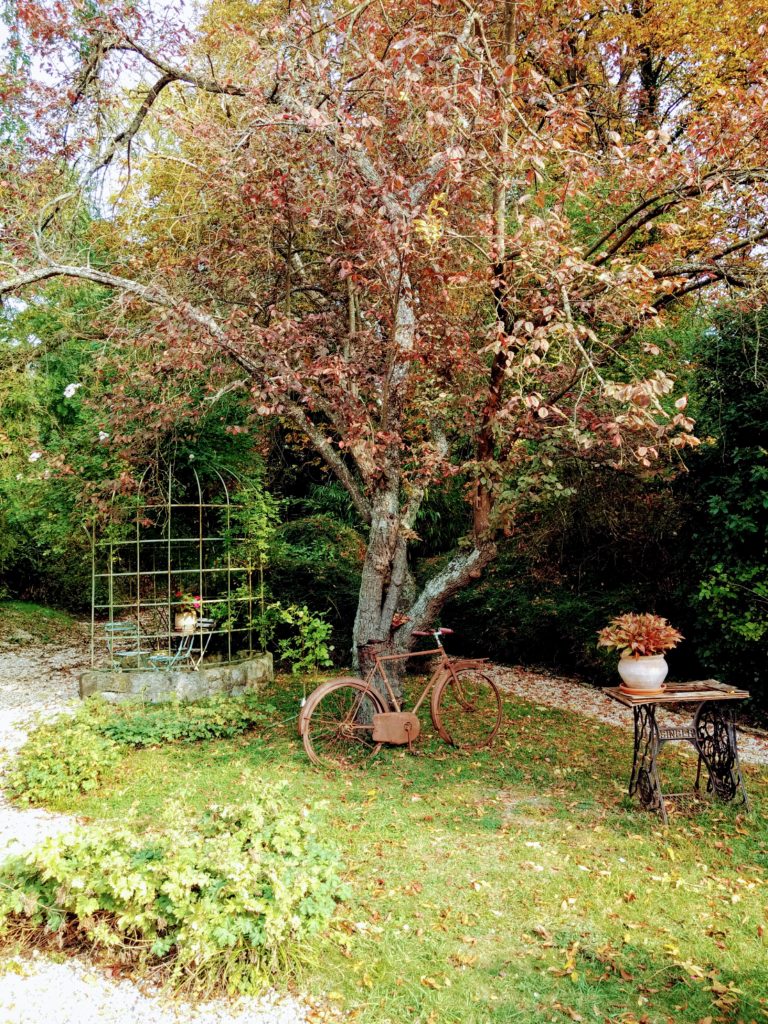
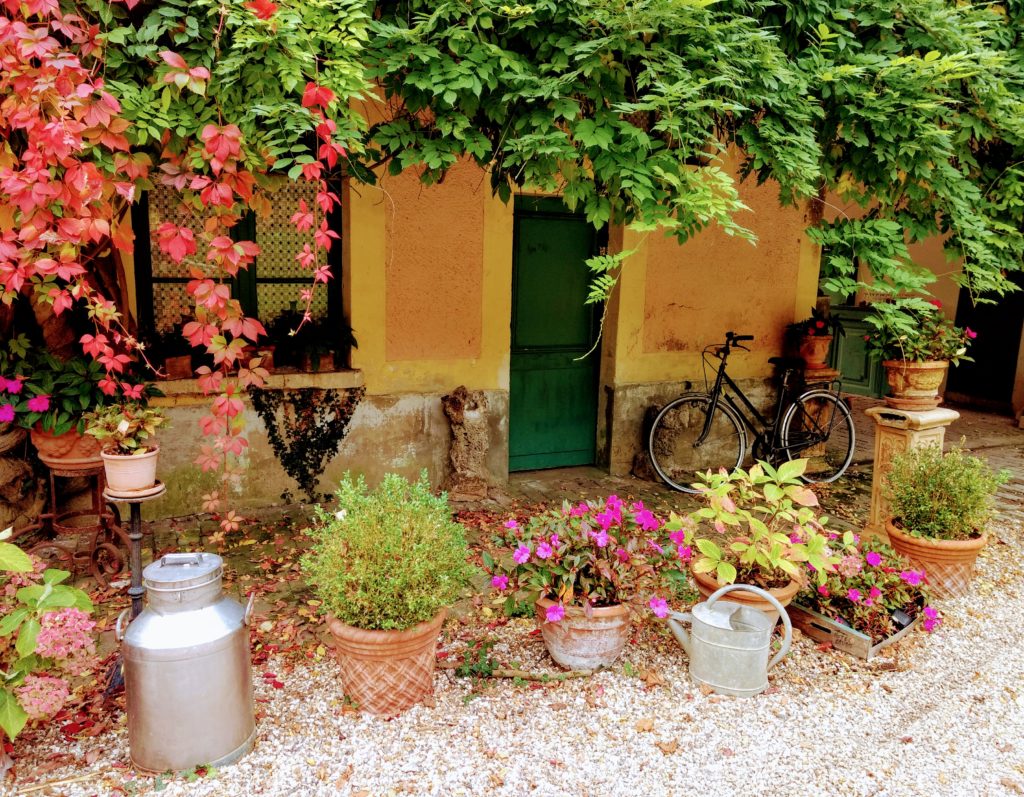
But really we’ve come to Giverny for Monet’s gardens, and so after a brief stop at the Giverny Museum of Impressionisms, (which at the time had a fine Managuin exhibit, though on the whole it isn’t as exciting as the Musée d’Orsay (then again, what is?)) we head to the gardens.
It’s true that Monet was a master painter, but I believe he was also a master gardener (and a master of marrying the two art forms). There are two sections to Monet’s garden: a flower garden (Clos Normand) and a Japanese inspired water garden, which he bought the land for and created ten years after he came to Giverny. While probably most people are coming for the water garden, I think the two gardens are equally impressive and in many ways complementary of each other. We arrive only a couple of weeks before the season’s end (luckily it’s still open) so we aren’t bombarded by massive crowds and can take our time wandering the rows of flowers, seeking out hidden benches to contemplate the early-Autumn colors. Interestingly, a friend of mine visited Giverny in June, and the landscape she experienced was completely different from the one we see. It’s easy to understand Monet’s obsession with this setting; every day the light and colors change, and every second in every day, microcosms of that landscape reveal something new.
Rather than attempt to describe the gardens, below I’m including a small collection of photos from my day to share with you. Enjoy!
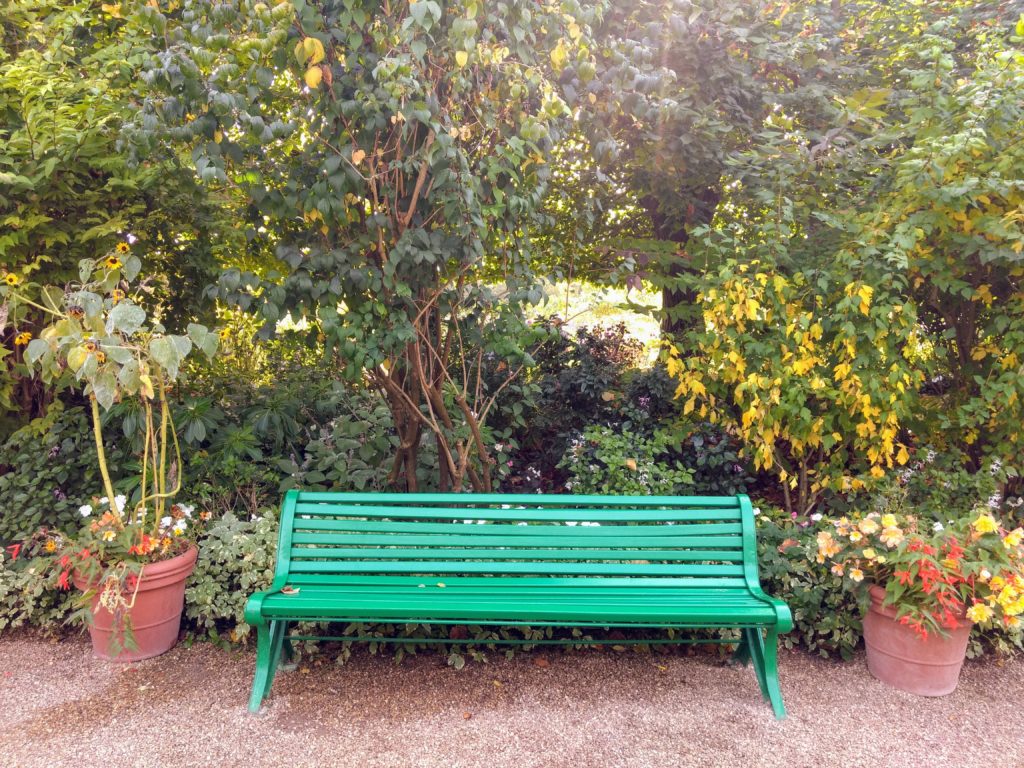
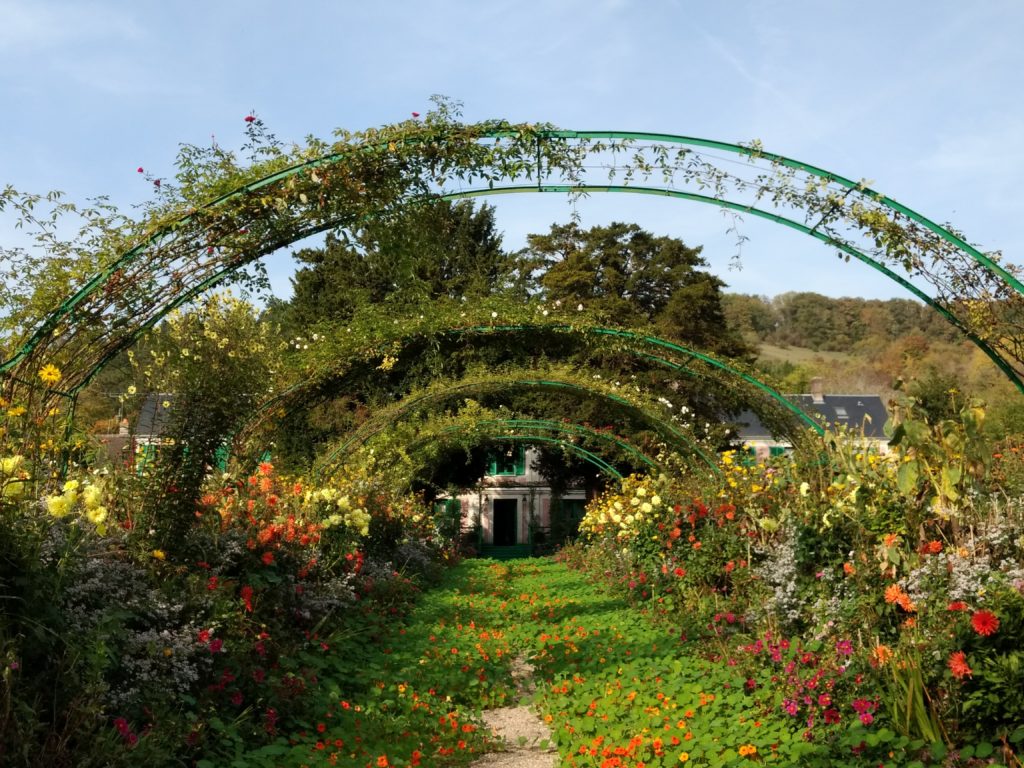


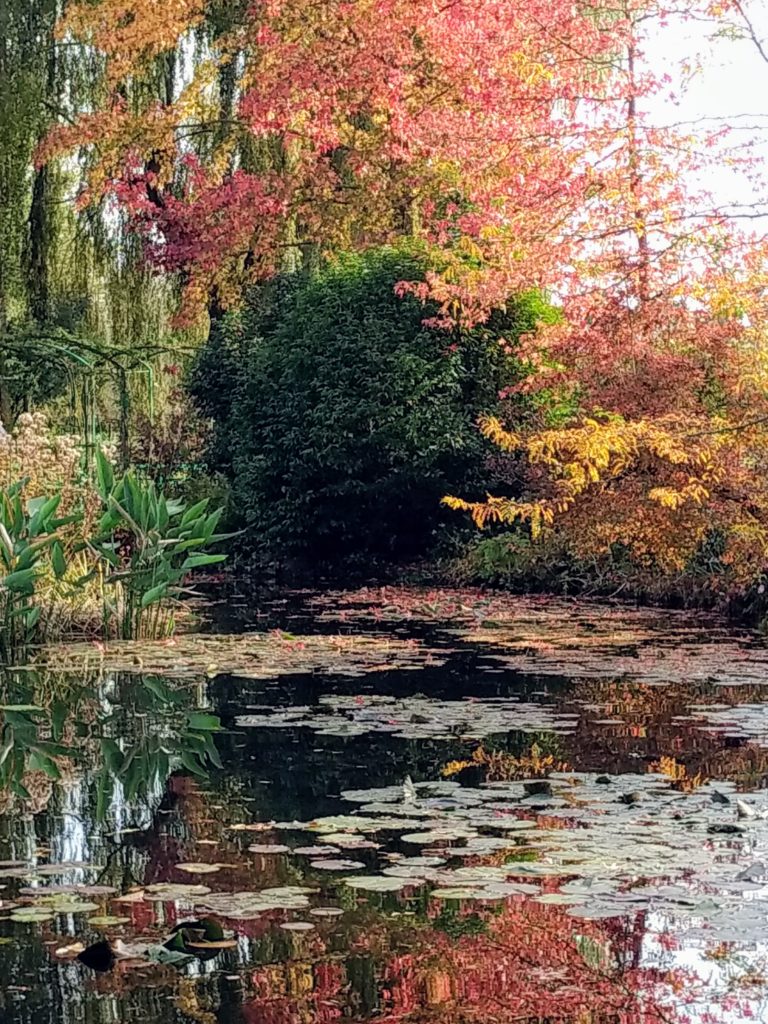
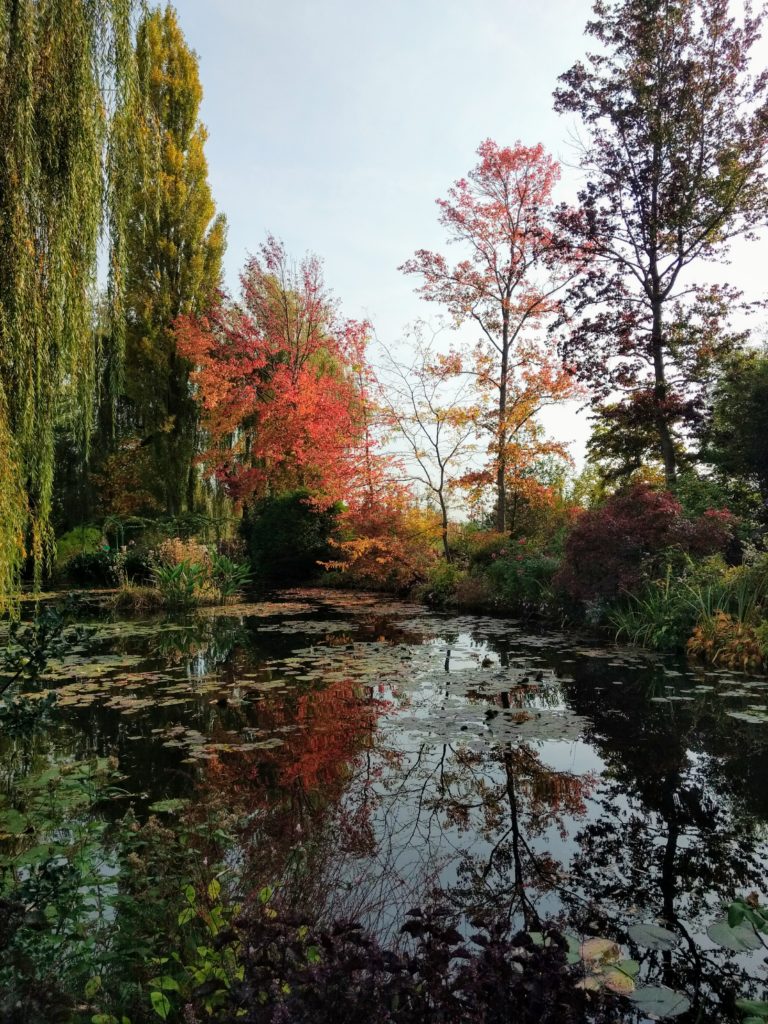
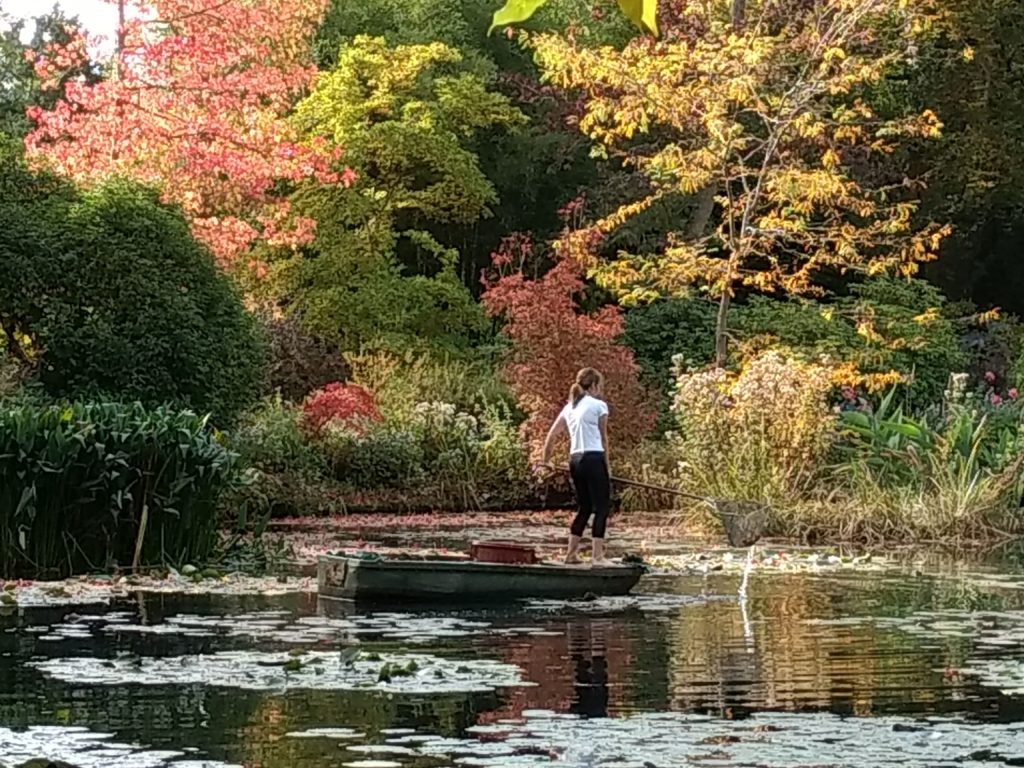
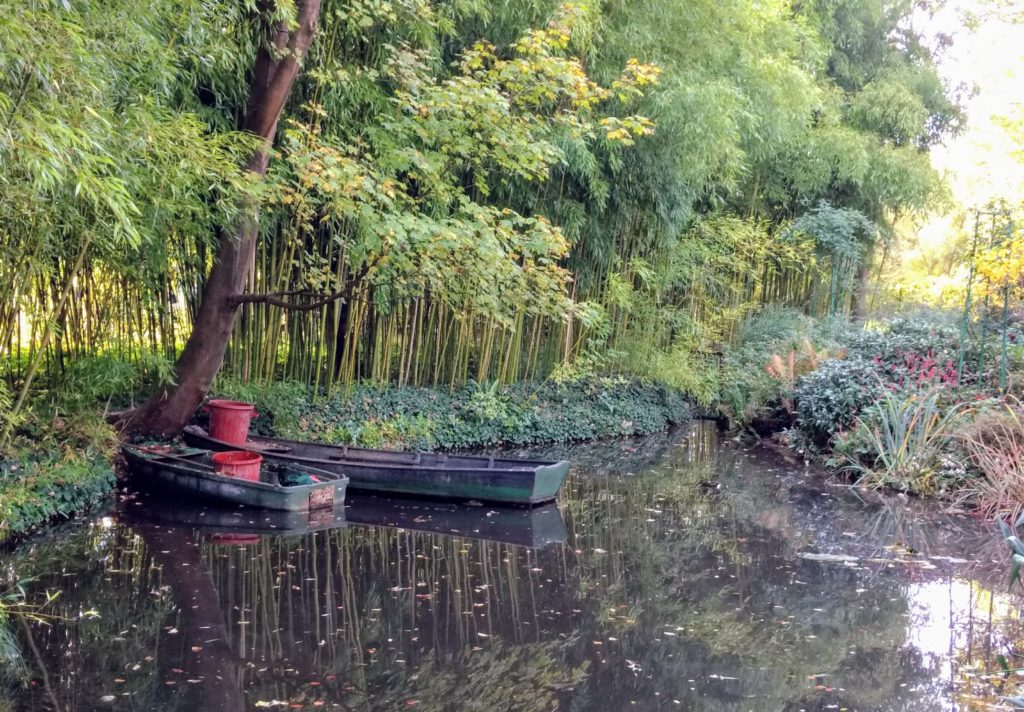
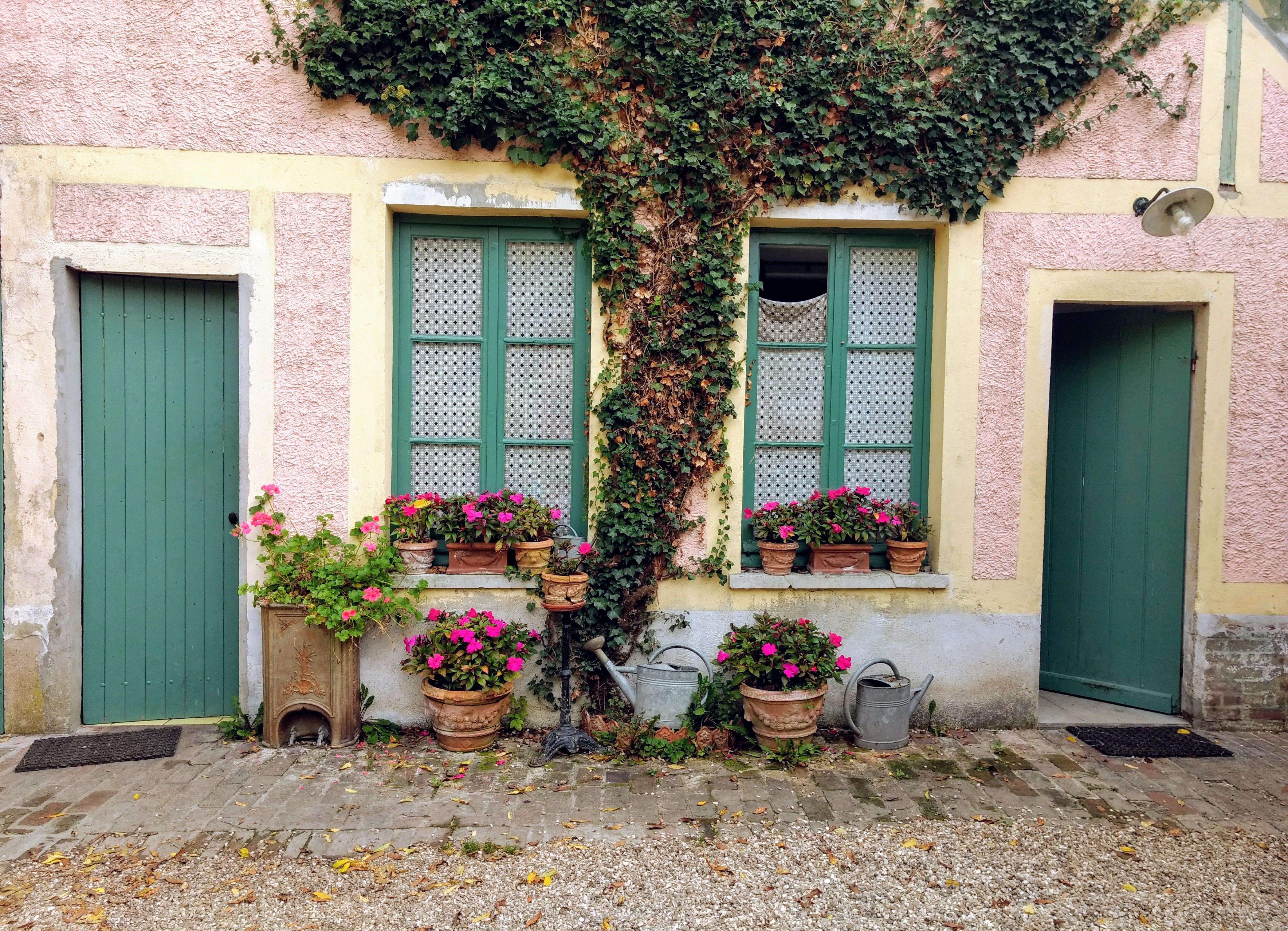



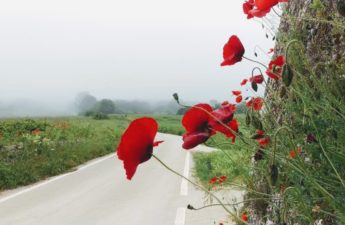
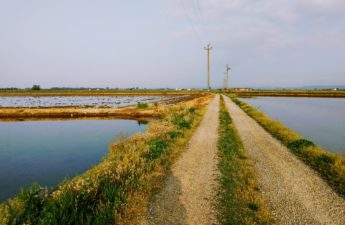
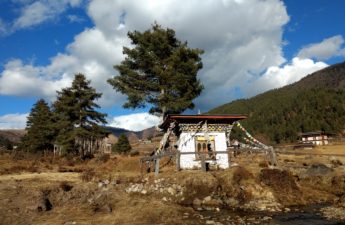
I wanted to post a photo from June to show how different it looks, but alas, I don’t seem to be able to. This makes me want to back in fall.
By different you mean “just the same” right?
I’m disappointed it’s closing next week. I was thinking it would be fun to come back and photograph the gardens (same shots) at every season. If I had a better camera (er, and were a better photographer!)
Glad you saw this 🙂
Wow! I’ve never been to Giverny either, but now I know that I want to go. In fall, especially!
That’s the problem, though. I want to go in every season — and probably multiples times throughout each season!
How lovely — that last one especially.
The picture of the boats? That’s my favorite shot from the day (I may frame it).